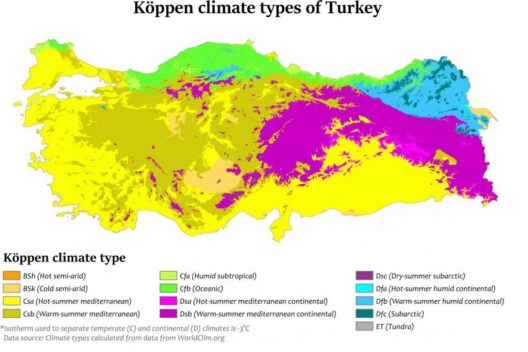As global temperatures continue to escalate, it’s natural to seek refuge in the cool embrace of air conditioning systems. However, while we revel in the chill of our indoor sanctuaries, a tantalizing question emerges: what cost does this comfort incur on our planet? Understanding how air conditioning contributes to global warming can illuminate the intricate relationship between our daily habits and the state of Earth’s climate.
To grasp the environmental impact of air conditioning, one must first recognize the mechanics behind this ubiquitous technology. Air conditioning units function primarily through the process of heat transfer; they extract heat from indoor air and expel it outdoors, thus cooling our living spaces. This process relies on refrigerants—substances essential for heat exchange—many of which are potent greenhouse gases. When these gases leak or are improperly disposed of, they enter the atmosphere and can trap heat significantly more effectively than carbon dioxide.
One of the most concerning refrigerants historically used in air conditioning systems is hydrofluorocarbons (HFCs). While HFCs were adopted as alternatives to ozone-depleting substances, their global warming potential is alarmingly high. For example, a single kilogram of HFCs can have the same warming effect as thousands of kilograms of carbon dioxide over a century. This paradox highlights a critical challenge; while striving to protect the ozone layer, we inadvertently exacerbate climate change.
Moreover, consider the energy footprint of air conditioning units. The majority of these devices require electricity to operate, and this energy often originates from fossil fuel combustion. As power plants burn coal, oil, or natural gas to generate electricity, they emit significant amounts of carbon dioxide. Consequently, an increase in air conditioning use leads to a rise in electricity demand, perpetuating a cycle that feeds into global warming. According to the U.S. Department of Energy, the energy consumption of air conditioning units contributes to about 8% of the total electricity use in the United States alone. This staggering statistic serves as a clarion call for re-evaluation of our cooling strategies.
As the climate crisis intensifies, the frequency and intensity of heatwaves also increase, leading to a paradoxical escalation in our reliance on air conditioning. As societies warm, more households and commercial spaces turn to these cooling systems, amplifying their energy demands and carbon footprints. This creates a vicious cycle where increased cooling needs lead to higher emissions, further escalating the global temperature. Turning the heat down on climate change will require innovative solutions alongside behavioral changes.
Are there alternatives to conventional air conditioning that could alleviate this burden on the environment? Indeed, several approaches exist. Passive cooling strategies, for instance, utilize architectural designs, shade, and ventilation to maintain comfortable indoor temperatures without the environmental costs associated with mechanical cooling. Implementing reflective roofs, strategic window placements, and lush landscaping can all serve to naturally cool spaces. Embracing such measures can significantly lighten the ecological load.
Advancements in technology also offer promising pathways. Energy-efficient air conditioning units equipped with smart technology can adjust cooling based on occupancy or external temperatures, optimizing energy use and reducing emissions. Additionally, utilizing renewable energy sources such as solar panels to power air conditioning systems can dramatically lessen the carbon output associated with electric cooling. By coupling innovation with responsible energy practices, consumers can combat climate change while enjoying comfort.
Despite these alternatives, the multifaceted challenge remains: how do we engage individuals and communities to adopt more sustainable cooling practices? Public awareness campaigns can highlight the hidden costs of cooling, while incentivizing energy-efficient upgrades can spark interest in greener technology. Community engagement is essential—local initiatives could promote tree planting, which naturally cools environments and enhances local ecosystems. Educational programs in schools that emphasize the importance of climate action and sustainable living can also inspire a new generation of conscious consumers.
It is clear that the intersection of comfort and climate presents a unique conundrum. As heatwaves become more frequent and the magnetic pull of air conditioning strengthens, the imperative to think critically about our energy choices grows. This is a challenge not just for individuals, but for industries and governments alike. Effective policies aimed at reducing emissions from cooling systems, coupled with rigorous monitoring of refrigerant leaks, are essential components of any comprehensive climate strategy.
As we contemplate the future, we must ask ourselves: how will we address the cooling costs for our planet? The road ahead is fraught with challenges, but embracing innovative solutions, raising awareness, and fostering a collective commitment to sustainable practices can lead us toward a cooler, healthier planet. The responsibility lies with each of us to be part of the solution, making conscious choices that respect our environment and ultimately safeguard our future.
In summary, air conditioning—a gift of modern convenience—poses considerable challenges to global warming. From potent refrigerants to increased energy demands, the implications of our cooling habits stretch far beyond our immediate comfort. Addressing these concerns involves a concerted effort to rethink how we cool our spaces and to pivot towards sustainable solutions that prioritize the health of our planet.





